Katowice 2011-11-04
Mierzęcice Pyrzowice Airport.
Geographic coordinates: 50.471E 19.074E. Elevation 298 m.
The airport is in Polish hands.
After the outbreak of the Korean War and the blockade of Berlin, the Kremlin forced Poland to develop military aviation beyond the need to defend its own borders. It was decided that the Mierzęcice Airport would become the base of the 39th and 40th PLM, which are part of the 7th DLM in Krakow, Czyżyny airport.
In the period 1949-1951, the airport was rebuilt and expanded to accommodate the operation of turbojet-powered aircraft. The basic combat equipment was to be Yakovlev Yak-23 planes.
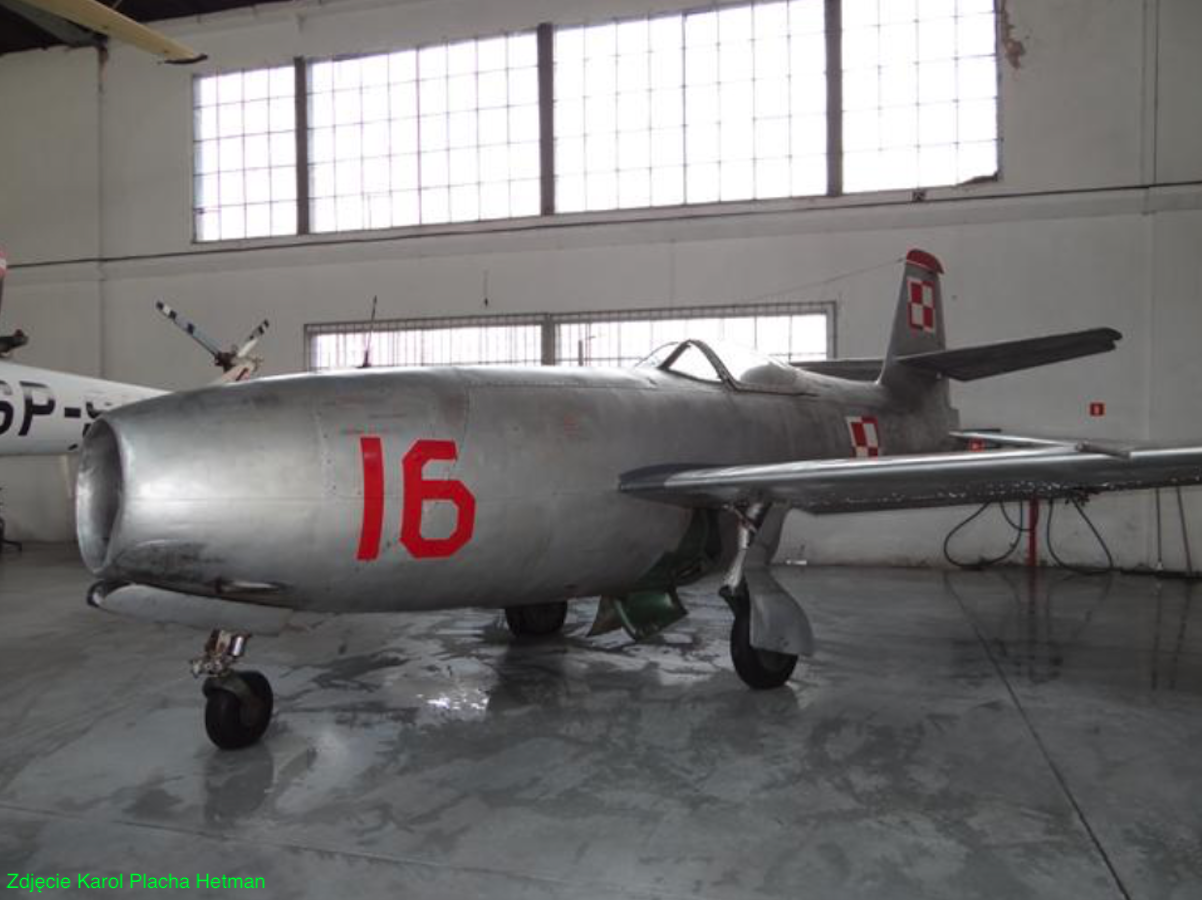
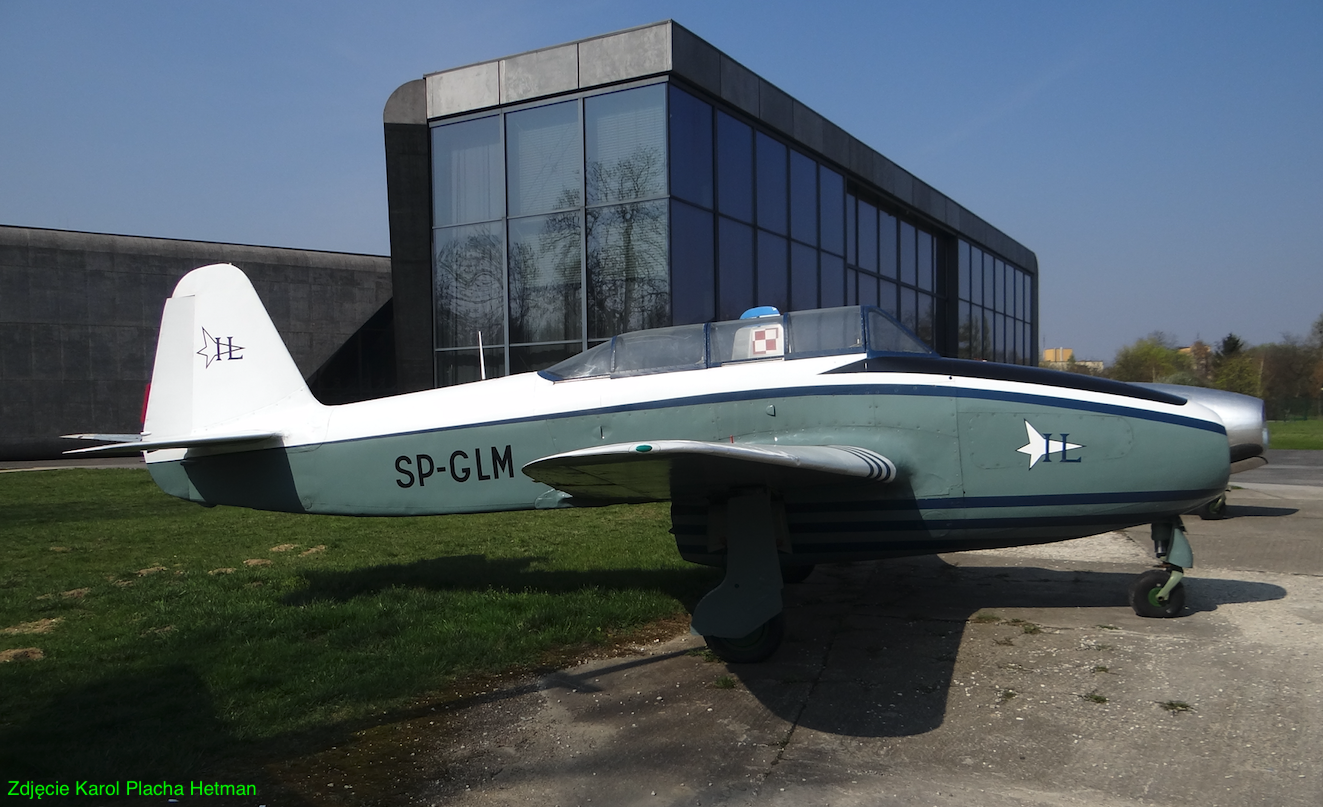
Military Branches.
In 1951, the 2nd PLM trained on turbojet-powered aircraft at the Bemowo Airport. In 1952, the 2nd PLM with Jak-23 aircraft began its operations at the Czyżyny-Rakowice airport in Krakow. The commander of the unit at that time was colonel pilot Jan Frej-Bielecki. Based on the personnel of the 2nd PLM, two more fighter regiments were organized, which together with it constituted the 7th DLM OPL. It was the 39th PLM and the 40th PLM. The Mierzęcice Airport was renovated for the newly formed regiments. So, October 1951 and Kraków are the place where the 39th PLM and 40th PLM began their operations.
The date of establishment of the 39th PLM is assumed to be April 17, 1951, although August 1, 1951 is also given. These differences result from the interpretation of the facts. On April 17, 1951, the decision was made to start forming the 39th PLM, and on August 1, 1951, the first order in the Regiment was issued. Ahead of the facts, we will state that the 39th PLM with its own logistics base was subordinated to the 7th DLM OPK with its headquarters in Krakow. On June 1, 1958, the 39th PLM was subordinated to the 1st National Area Defense Corps with headquarters in Warsaw. In 1962, the unit was subordinated to the commander of the 3rd PLM Strachowice.
Already in February 1952, the 39th PLM was stationed in Mierzęcice, as JW. 4208. Regiments from the 7th DLM use the Pustynia Błędowska training ground for exercises. 39. PLM, in addition to the Mierzęcice Airport, had at its disposal the Kamień Śląski Airport in the Opole Voivodeship. The Regiment was transferred there at least once a year. Redeployments were usually related to exercises, but also to the renovation of RWY and DK. Such renovation was carried out on average every 5 years (to varying extent). Among other things, at the turn of 1983-1984.
During service, unit number JW. 4208 was changed to JW. 1901. This number lasted the longest, until the disbandment of the 39th PLM, i.e. until 1987. Throughout its service, the 39th PLM was based at Mierzęcice Airport (1952-1987).
In parallel with the 39th PLM, the 40th PLM was formed. Also at Czyżyny Airport and was also transferred in February 1952 to Mierzęcice Airport. But already on January 17, 1953, it was airlifted to Świdwin Airport, where it remains to this day (2011) as the 40th ELT, part of the 1st Tactical Aviation Wing.
Initially, Yakovlev Yak-23 fighter aircraft were used. It is worth noting that the 39th and 40th PLM never operated propeller-driven fighters. Very quickly, the 39th PLM was rearmed with MiG-15 aircraft obtained from other Polish regiments, and then with new Lim-1/2 fighters.
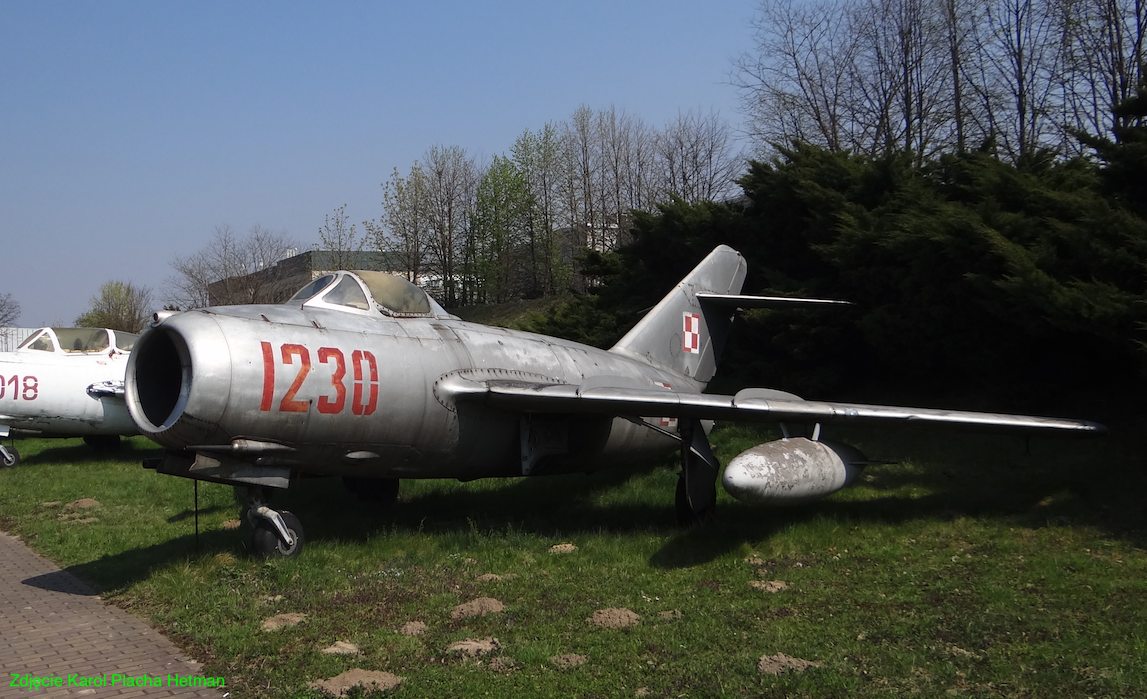
In the fall of 1957, the 39th PLM received the first new Lim-5 aircraft.
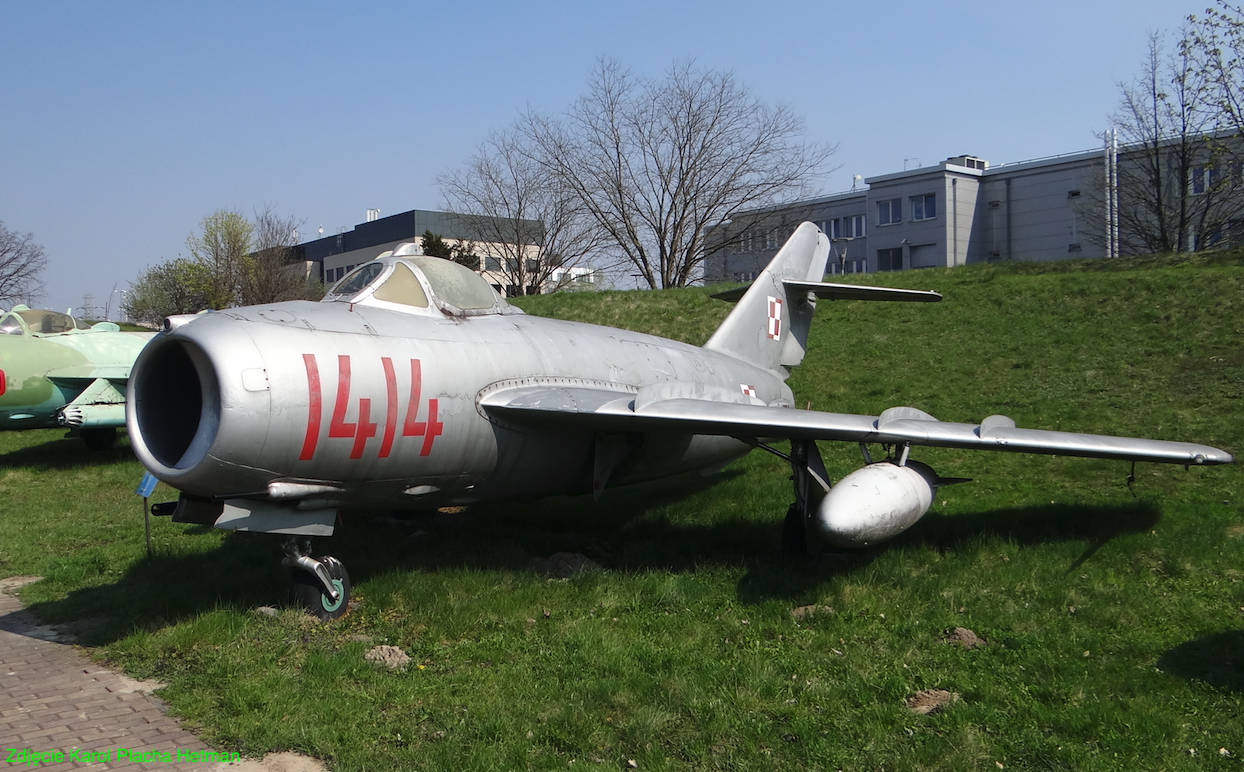
MiG-19 in the 39th PLM. 1958.
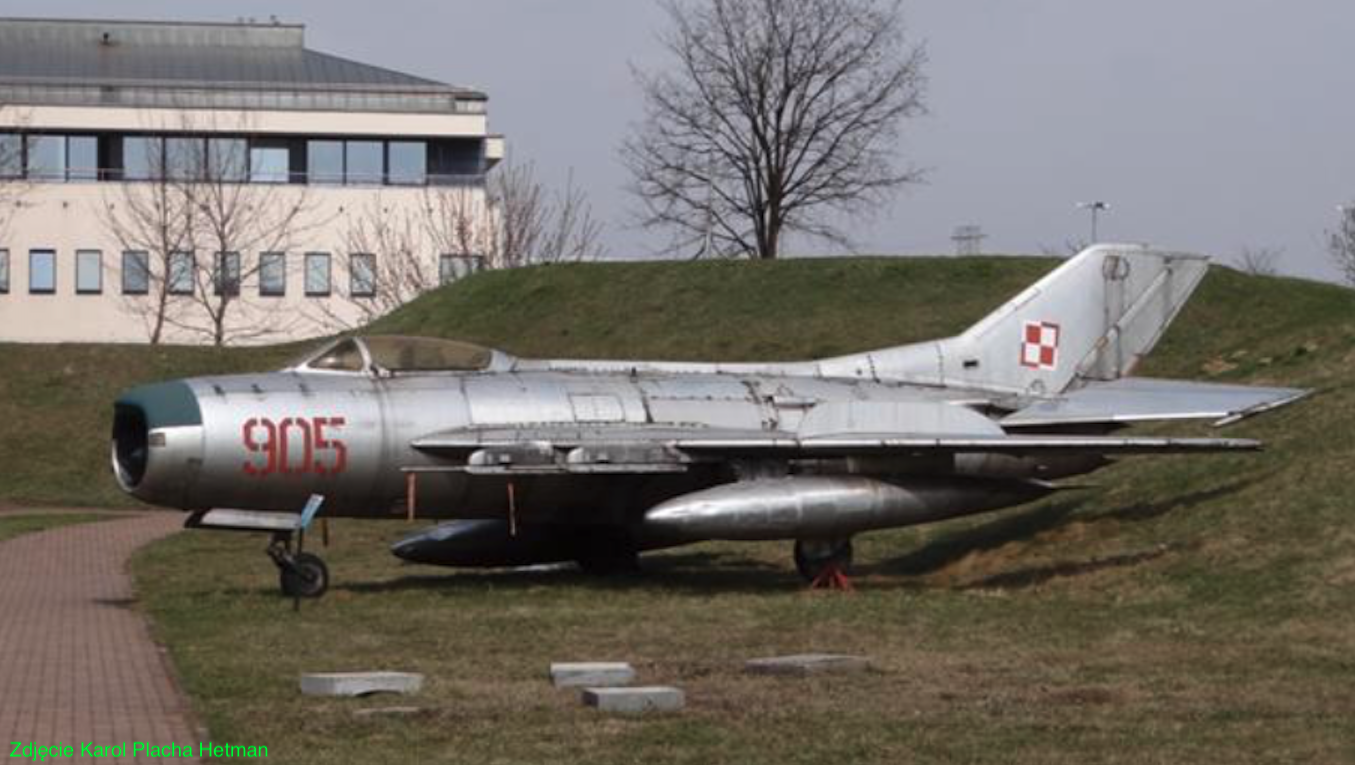
In the second half of the 50s, the Kremlin reluctantly agreed to sell MiG-19 fighters to Poland. In 1958, the 39th PLM was selected, alongside the 62nd PLM Krzesina and 28th PLM Słupsk, to be re-equipped with the first supersonic fighter aircraft in Poland. Pilots from Mierzęcice received training on the MiG-19 in Poland at the Modlin Airport at the Pilots' College. The introduction of MiG-19 fighters at Mierzęcice Airport proved the importance of this airport in Poland's defense system, and the planes were deployed so as to cover the entire western part of the country. MiG-19 P planes have been equipped with the first squadron of the regiment since 1958. The number of MiG-19 P, PM aircraft in the Regiment changed. Most of the machines (max. 16 copies) were in the Regiment's inventory after transferring some of the planes from the first squadron of the 62nd PLM.
In the spring of 1962, a group of several pilots went to CCCP for training in interception using RS-2 U guided missiles, which were equipped with the MiG-19 PM. The entire group consisted of pilots from the WOPK command, 28th and 39th PLM, and included: Major pilot. Czesław Kantyka - group commander, captain pil. Henryk Dańko, lieutenant pilot Mieczysław Furmanek, captain pil. Bogusław Jaromin, lieutenant pilot Wojciech Matonog, captain pil. Zdzisław Skrzydłowski, lieutenant pilot. Władysław Waltoś and an armaments officer from WOPK. On July 1, 1965, the 39th PLM had in stock: 5 MiG-19 PM, 9 MiG-19 P, 6 Lim-5, 13 Lim-2, 8 MiG-15 UTI, 2 TS-8 Bies and 1 An -2.
On August 2, 1966, a plane crash occurred in the 39th PLM. The regiment was transferred to the alternate airfield in Kamień Śląski. The pilots were preparing for a night departure. The first to taxi out was Capt. pil. Eugeniusz Nasiorowski, on the MiG-19 P nb 727 aircraft. During take-off, after 100-150 m of takeoff roll, the aircraft experienced thrust asymmetry. The right engine worked at maximum thrust - "forsage", and the left one only ran at "maximum" or "nominal" (the accident commission failed to determine this). The plane veered off the runway and slid along the grassy part of the airport straight into a stand filled with planes. The pilot, seeing the situation and fearing a collision with the planes, lifted the plane. Too low a speed caused the plane to fall from a height of 5-10 m onto the wing. When it fell, fuel spilled and an explosion occurred. This entire tragic situation was observed by other pilots of the squadron sitting in their planes prepared for take-off. Firefighters immediately started to fight the fire, trying to extinguish the burning plane and prevent the fire from reaching the planes on the stator. Unfortunately, Capt. pil. Eugeniusz Nasiorowski died in the burning machine. Honor his memory!
During the service, the Regiment transferred several MiG-19 P, PM aircraft to the 28th PLM. The withdrawal of MiG-19 fighters from the 39th PLM began in 1965. The last flights on MiG-19 aircraft were carried out in May 1967. Also in May 1967, the last few aircraft were transferred to the 28th PLM, which had been using this type of fighter the longest.
MiG-21 in 39.PLM. 1966.
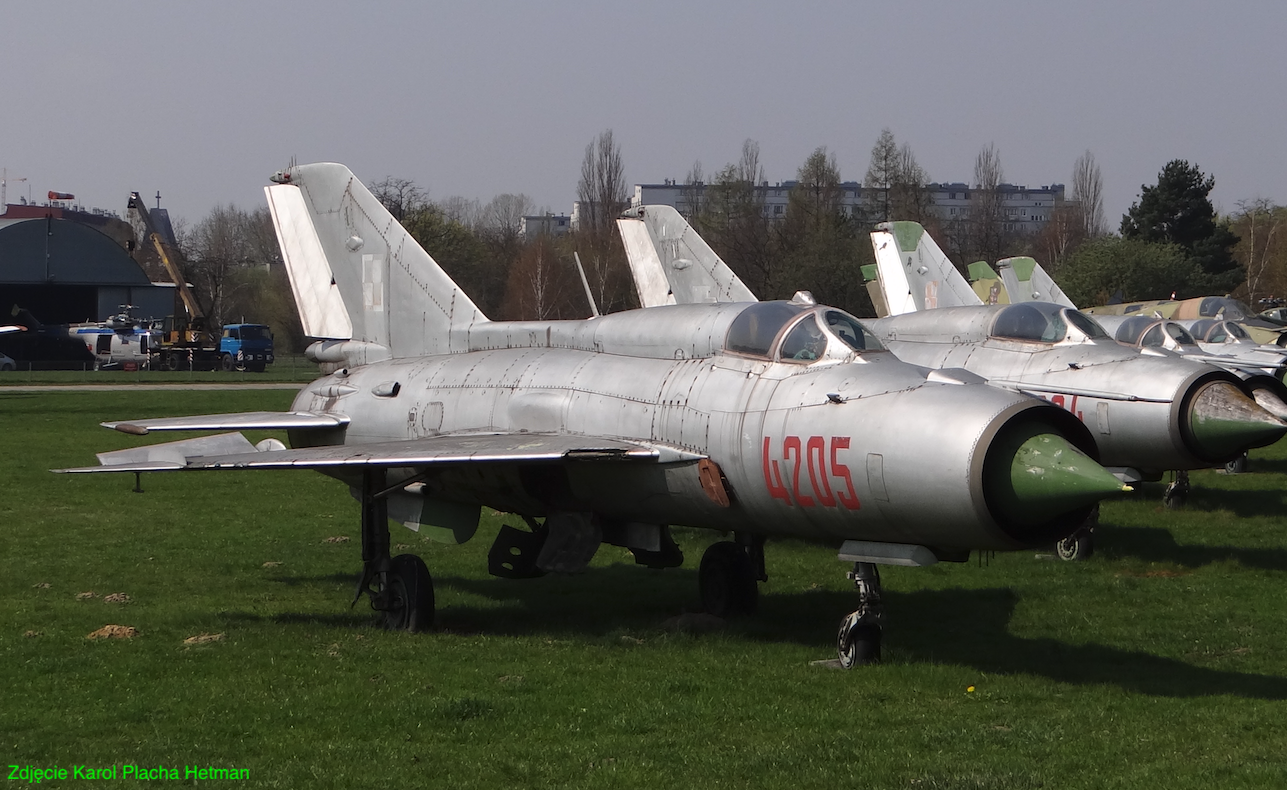
After the MiG-19 aircraft were withdrawn from service, the 39th Regiment continued to use Lim-5 and Lim-5 P and SB Lim-2 aircraft. In 1966, the first MiG-21 PF machines were delivered to the Regiment. These were new planes. Back in the 1960s, probably in 1969, the Regiment received MiG-21 PFM fighters. Also new. Both types were used until the Regiment was disbanded, i.e. until 1987. It is worth noting that other combat versions of the MiG-21 in the 39th PLM in Mierzęcice were not used. If they existed, they were exceptional and in single copies. The combat versions were complemented by several examples of the MiG-21 U and MiG-21 US training aircraft.
In 1973, after reorganization in the 39th PLM, the number of squadrons was reduced from three to two. These were the 1st ELM and the 2nd ELM, colloquially called "flying" ones, and a technical squadron that protected them from the point of view of current services and repaired any failures. One of the commanders of the 39th PLM, in the period 1976-1981, was the then colonel and later commander of the air force, Mr. Jerzy Gotwała.
Poland's difficult economic situation, caused by the incompetence of the communist authorities, forced the Ministry of National Defense to reduce its armament. The number of aircraft used in regiments was reduced. To maintain pilots' flying habits, TS-11 Iskra training aircraft were widely introduced. However, this did not help much and further reductions were necessary. The 39th PLM was disbanded. The regiment's banner was handed over to the WOPK commander in Warsaw.
Aircraft used in the 39th PLM:
Turbojet aircraft; Jak-17 W Agata, Jak-23, MiG-15, UTI MiG-15, SB Lim-1/2, Lim-2, Lim-5, MiG-19 P, MiG-19 PM, MiG-21 PF, MiG -21 PFM, MiG-21 U, MiG-21 US, TS-11 Iskra. Piston airplanes; TS-8 Bies, An-2, PZL-104 Wilga.
After the disbandment (1987) of the 39th PLM, operational MiG-21 aircraft were transferred to the 10th PLM Łask. Mierzęcice Airport and the unit stationed there were transformed into the Airport Maintenance Command as JW. 4043. The airport area also became a non-permanent base for decommissioned aircraft. Using the engineering and aviation staff remaining after the dissolution of the 39th PLM on September 1, 1987, the 51st Field Aviation Workshop was established, whose task was to renovate Mi-24 W/D combat helicopters. The 51st PWL unit was disbanded on November 31, 1990 (JW 2490). In 1990, Mierzęcice Airport became the site of cutting down several MiG-21 PF machines for scrap to demonstrate to the free world the unilateral reduction of armament.
Written by Karol Placha Hetman
